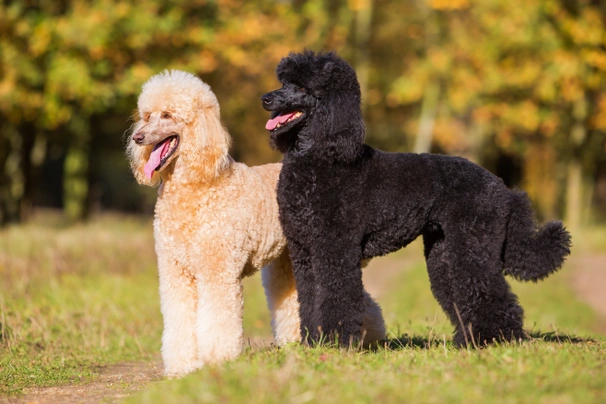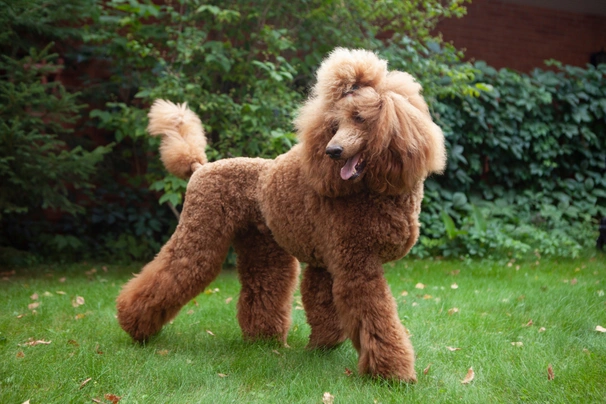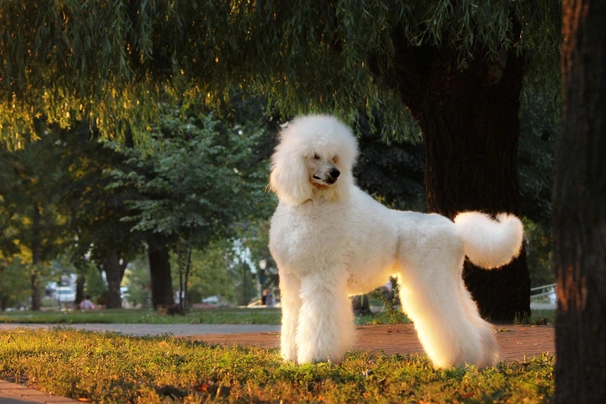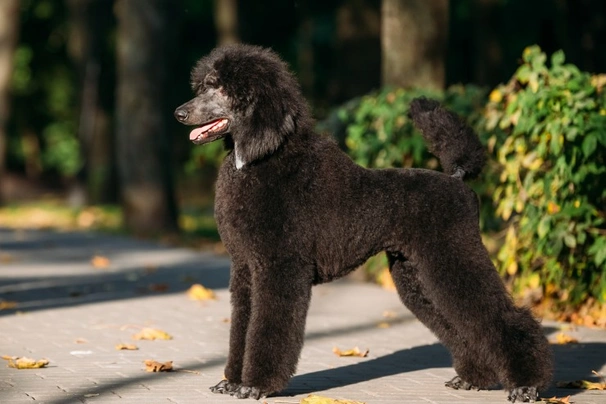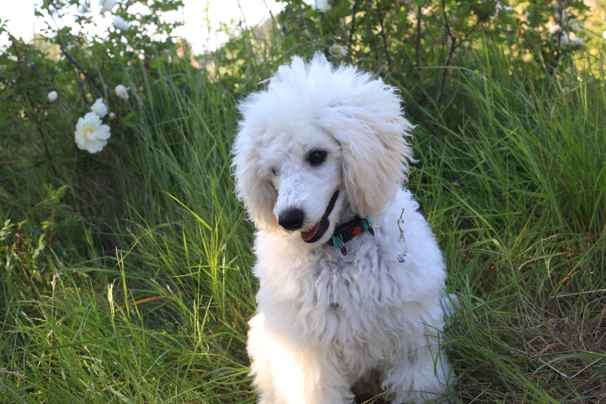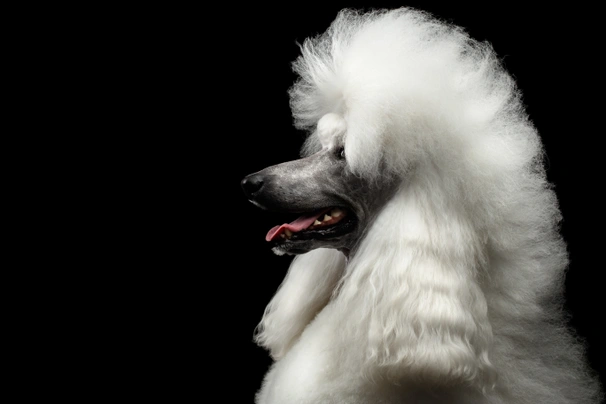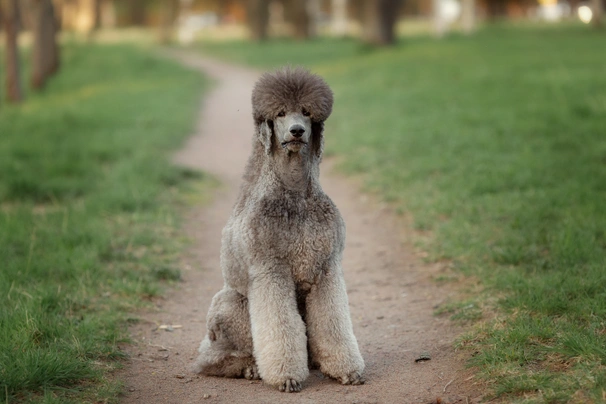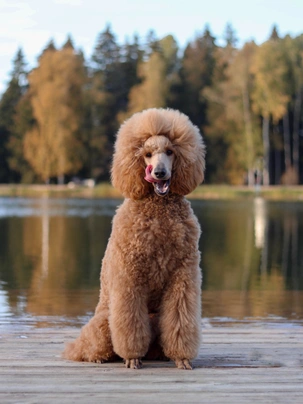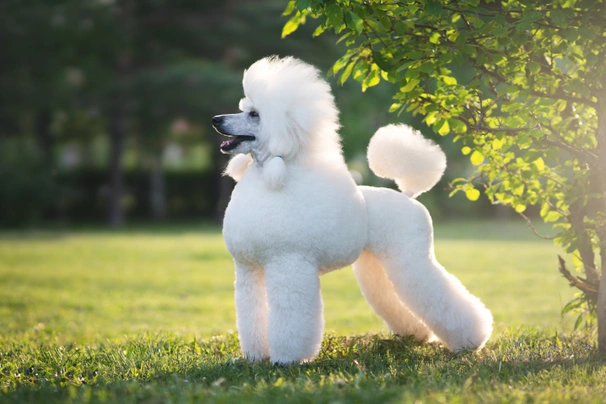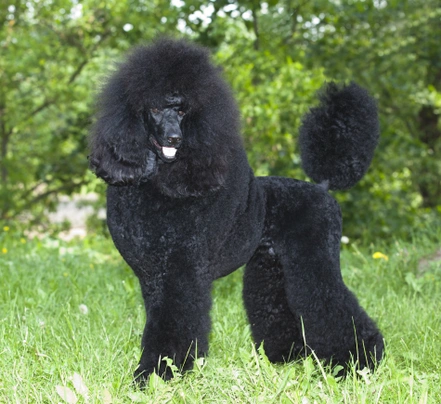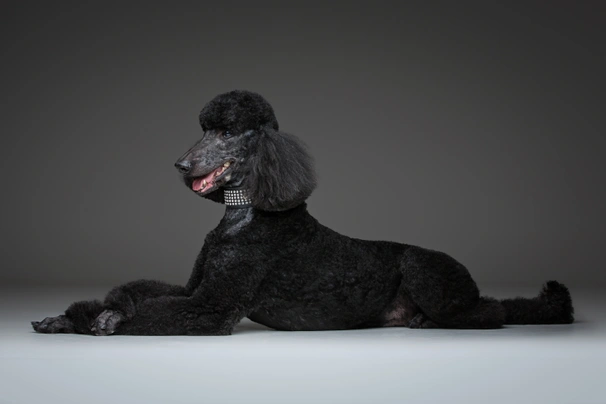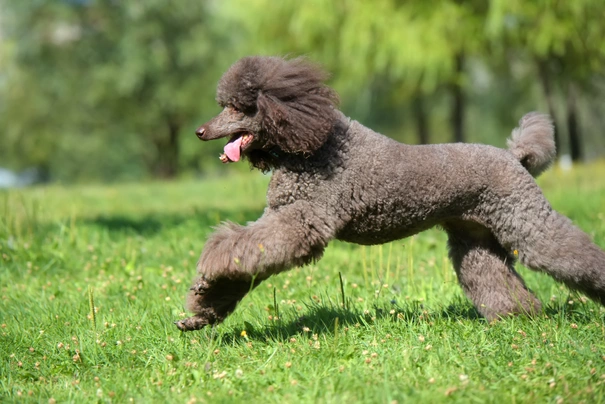Poodle
Introduction of the Poodle
When you mention the word 'Poodle' people conjure up an image of a pampered pet. In fact the Poodle a dog of many sizes being found in 3 sizes the Toy Poodle Miniature Poodle and Standard Poodle is often cited as being in the top 5 for intelligence in dog breeds and is an excellent multipurpose dog excelling at many canine sports.
History of the Poodle
The Poodle as a breed has been around for many years and was bred as a water dog to retrieve game and fowl from rivers and lakes. The name 'Poodle' is thought to be a derivative of the old German extraction 'pudeln' which translates roughly as 'to splash in water'. The exact origins are unclear. Whether its ancestors originally hailed from the East or Africa is debateable but it is believed that they eventually found their way to Europe notably Portugal where one of its alleged cousins the Portuguese Water Dog hails from. Having very similar appearances this is not impossible. The 3 sizes of Poodle have existed for centuries with the larger sizes working in the field and the smaller sizes being kept as companions. The toy variety sometimes know as the 'Sleeve Poodle' was sometimes kept in the sleeves of its owners and was used as a hand warmer. Poodles have had a very colourful history being kept by nobility and royalty through to travelling people. They have been utilised in every possible role a dog could fill and to this day remain a popular companion.
Appearance of the Poodle
Height
Toy Poodle : Males 24 - 28 cm Females 24 - 28 cm at the withers
Miniature Poodle : Males 28 - 38 cm Females 28 - 38 cm at the withers
Standard Poodle : Males over 38 cm Females over 38 cm at the withers
Weight
Toy Poodle : Males 3 - 6 kg Females 3 - 6 kg
Miniature Poodle : Males 7 - 8 kg Females 7 -8 kg
Standard Poodle : Males 30 - 35 kg Females 21 - 32 kg
Poodles have a luxuriant even textured and curled single coat which does not shed a great deal making it a good choice for people with allergies. Its coat is always a solid colour and comes in a variety of colours including black white cream silver apricot red fawn and brown. The coat is frequently darker in colour around the ears but otherwise is usually a regular colour all over the body. The colour of the nose and lips is usually black but is also proportional to the coat colours with the lighter coloured coat liver or slightly paler skin is allowed. All sizes of Poodles are very well proportioned and have well-muscled hindquarters which is sometimes enhanced by the variety of cuts the coats are seen with. The desired appearance is boxy with strong legs back and neck. The head of the dog is narrow with a tapered muzzle dark and fiercely intelligent eyes and ears that flop forwards onto the cheeks.
Temperament of the Poodle
As a very intelligent dog Poodles can get bored quite easily if not enough mental and physical stimulation is provided. This needs to be in the form of exercise play learning and obedience. The Poodle is very capable of learning new commands and has a talent for learning tricks the reason why along with its showy appearance it used to be used on a regular basis in circuses. They are playful patient and loyal to the family but can be reserved with strangers until they get to know them. This makes them (all sizes) good watch dogs and they will readily bark to alert of anyone approaching the home. They are very companionable animals and like children and other animals however the usual early socialisation will not hurt at all. The Poodle has a high energy and drive even the Toy variety and requires at least two walks per day and it can become destructive if an outlet for this energy is not given to it. Do not make the mistake of thinking that the Toy Poodle is not energetic. While of course it does not need to walk as far on a daily basis as it larger counterpart it still needs a structured exercise routine. The only real comment on difference with regards to the size is that the Toy size does need careful handling as it is quite small and cannot tolerate too much rough house play as it could be easily injured.
Intelligence / Trainability of the Poodle
Standard Poodles live up to 13 years of age with Toy and Miniature living a little longer on average to 15 years. They are quite a hardy breed of dog with Bloat being the main complaint in the Standard Poodle. Bloat is a medical emergency that can cause horrible pain and proves fatal in an estimated 40% of all cases. It is a gastric dilation of the stomach caused by an unusual accumulation of gas/liquid. This can be dangerous enough in its own right but sometimes it leads to a second stage called volvulus which is a stomach twisting or torsion. This shuts the stomach off from the rest of the body and prevents any of the accumulated gas or fluid within to escape. The stomach continues to expand setting off a catastrophic series of events that in most cases can only be averted with emergency surgery. To minimise the chances of Bloat this dog should be fed at least an hour before or after exercise with its water provided on a raised platform.
Children and other
Regular grooming of the coat is an absolute necessity to prevent matting. This will take a considerable amount of time on the part of the owner who must be dedicated to doing this for the dog. Professional help is usually required at least every 3 months and these costs must be taken into account when deciding to own a Poodle. They also require at least two daily walks or runs or one decent walk for the Toy variety.
Health of the Poodle
Caring for the Poodle
Grooming of the Poodle
Exercise of the Poodle
Feeding of the Poodle
Poodle price
Buying advice

Kc regToy poodle puppies for loving homes
£995
Super lovable boy poodle pups
£850
